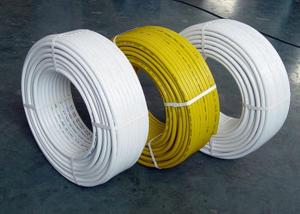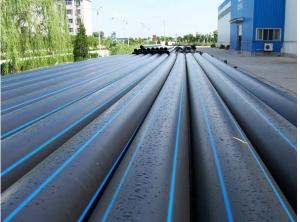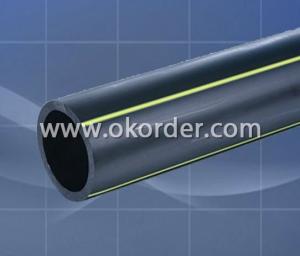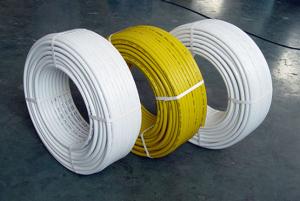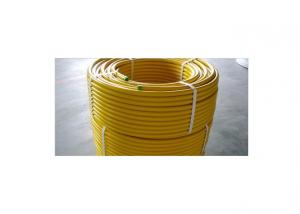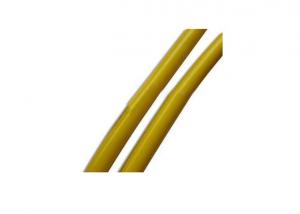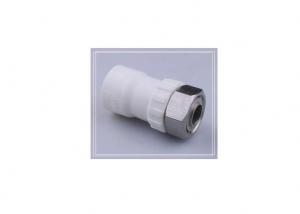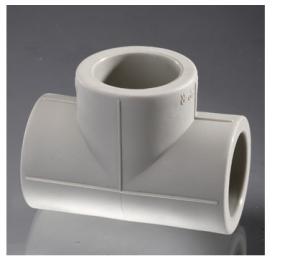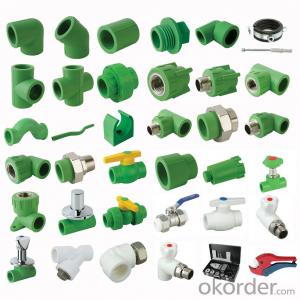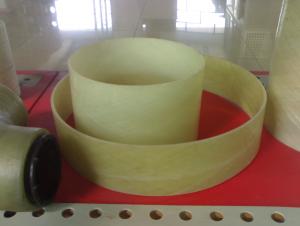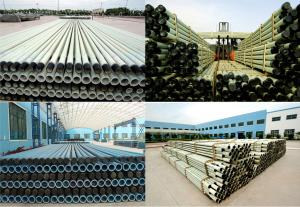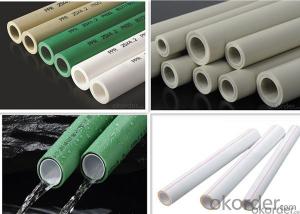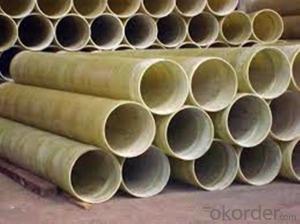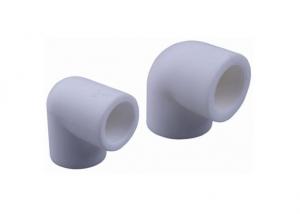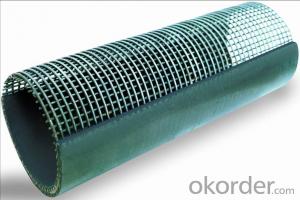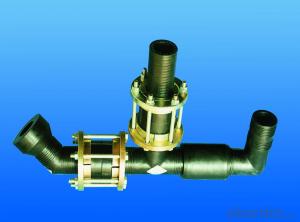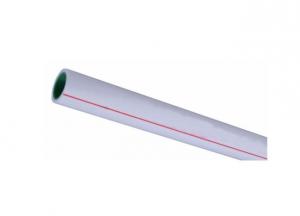Composite PPR Pipes (White, Gray)
- Loading Port:
- China Main Port
- Payment Terms:
- TT or LC
- Min Order Qty:
- 5000 Meter m
- Supply Capability:
- 5000000 Meters m/month
OKorder Service Pledge
OKorder Financial Service
You Might Also Like
Features of PPR Pipe (white, gray):
1) Material: PPR
2) Dimensions: dn16-125mm
3) Pipe series: S5/PN12.5, S4/PN16, S3.2/PN20, S2.5/PN25
4) According to ISO15874, DIN: 8078 / 8077
5) Colors: white, gray, green
Properties PPR Pipe (white, gray):
1) Healthy and non-toxic, bacteriologically neutral, conforming to drinking water standards
2) Resistant to high temperatures (110°), good impact strength (over 5MPa)
3) Unique and unrivaled German connection technique, convenient and reliable installation, low construction expenses
4) Excellent heat-insulation property from minimum thermal conductivity
5) Lightweight, convenient to transport and handle, good for labor-saving
6) Smooth inner walls reduce pressure loss and increase flow speed
7) Sound insulation (reduced by 40% compared to galvanized steel pipes)
8) Light colors and excellent design ensure suitability for both exposed and hidden installation
9) Recyclable, environment-friendly, accords with GBM standards
10) Extremely long usage life for at least 50 years
Applications PPR Pipe (white, gray):
1) Cold and hot water supply systems for civil and industrial constructions, e.g. in residential buildings, hospitals, hotels, school and office buildings, ship building
2) Drinking water systems and food industry pipe works
3) Central air conditioning system
4) Irrigating system for gardens and green houses
5) Public and sport facilities such as swimming pools and stadiums
6) For rainwater utilization systems.
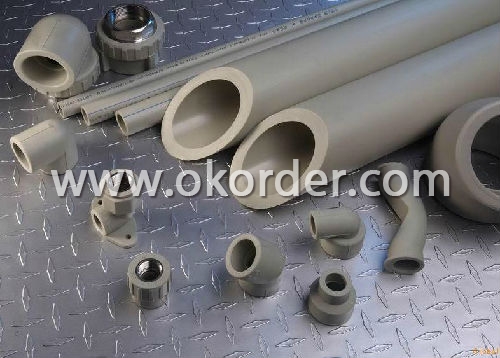
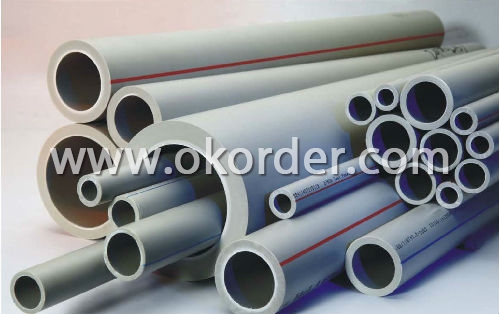
- Q: Can composite pipes be used for transporting drinking water?
- Yes, composite pipes can be used for transporting drinking water. Composite pipes are known for their corrosion resistance, durability, and light weight, making them suitable for various applications, including the transportation of drinking water. They are often made with materials such as fiberglass or carbon fiber, which are non-toxic and do not leach harmful substances into the water. Additionally, composite pipes can be designed with smooth inner linings, reducing the chances of bacterial growth and maintaining the water's quality.
- Q: How do composite pipes handle water hammer effects?
- Composite pipes handle water hammer effects by dissipating the energy generated during the sudden changes in water flow. The combination of resilient materials, such as fiberglass and thermoplastic, in composite pipes helps absorb the pressure surges caused by water hammer, preventing damage to the pipes and the overall system. This makes composite pipes more resistant and durable against the detrimental effects of water hammer.
- Q: Do composite pipes have a high resistance to external pressure?
- Yes, composite pipes are known for their high resistance to external pressure. This is due to the combination of materials used in their construction, such as fiberglass or carbon fiber reinforced polymers, which provide excellent strength and durability.
- Q: Can composite pipes be used for gas distribution?
- Yes, composite pipes can be used for gas distribution. Composite pipes are made from a combination of materials such as fiberglass, carbon fiber, or plastic, which makes them lightweight, corrosion-resistant, and durable. These properties make composite pipes suitable for gas distribution systems as they can effectively transport and distribute gas safely and efficiently.
- Q: What is the difference between PSP steel plastic composite pressure pipe and galvanized plastic composite pressure pipe?
- Steel plastic composite pressure pipe and galvanized steel plastic composite pipe for drinking water pipeline replacement products, completely solve the two pollution problems caused by the quality of galvanized pipe, is a revolution in the pipeline industry, two have high mechanical strength, pressure stable performance, long service life, but the two have the essential difference.
- Q: Can composite pipes be used for effluent treatment plants?
- Yes, composite pipes can be used for effluent treatment plants. Composite pipes offer several advantages such as high resistance to corrosion, chemical attacks, and abrasion, making them suitable for handling the various types of effluent and chemicals involved in the treatment process. Additionally, composite pipes are lightweight, easy to install, and have a longer lifespan compared to traditional pipe materials.
- Q: Are composite pipes resistant to corrosion?
- Yes, composite pipes are highly resistant to corrosion.
- Q: Can composite pipes be used for district heating and cooling systems?
- Yes, composite pipes can be used for district heating and cooling systems. Composite pipes are known for their excellent thermal insulation properties, making them an ideal choice for such systems. They offer high strength, corrosion resistance, and low thermal conductivity, ensuring efficient heat transfer while minimizing heat loss. Additionally, composite pipes are lightweight and easy to install, making them a cost-effective solution for district heating and cooling systems.
- Q: Can composite pipes be used for aquaculture farms?
- Yes, composite pipes can be used for aquaculture farms. Composite pipes are known for their durability, corrosion resistance, and ability to handle high-pressure environments, making them suitable for various applications including aquaculture. These pipes are lightweight, easy to install, and have a long lifespan, making them a cost-effective choice for aquaculture farms. Additionally, composite pipes can be customized to meet the specific needs of aquaculture systems, such as carrying water, air, or other fluids required for fish farming.
- Q: Can composite pipes be used for sewage systems?
- Yes, composite pipes can be used for sewage systems. Composite pipes are made with materials that are resistant to corrosion and have high strength, making them suitable for carrying wastewater and sewage. Additionally, composite pipes have smooth inner surfaces, which prevent clogging and allow for efficient flow of sewage.
1. Manufacturer Overview
| Location | Wuhan,China |
| Year Established | 1986 |
| Annual Output Value | US$2.5 Million - US$5 Million |
| Main Markets | Southeast Asia Africa Oceania Mid East Eastern Asia |
| Company Certifications | ISO9001-2008 |
2. Manufacturer Certificates
| a) Certification Name | |
| Range | |
| Reference | |
| Validity Period |
3. Manufacturer Capability
| a) Trade Capacity | |
| Nearest Port | Wuhan |
| Export Percentage | 71% - 80% |
| No.of Employees in Trade Department | Above 50 People |
| Language Spoken: | English, Chinese |
| b) Factory Information | |
| Factory Size: | 5,000-10,000 square meters |
| No. of Production Lines | 5 |
| Contract Manufacturing | OEM Service Offered;Design Service Offered;Buyer Label Offered |
| Product Price Range | Average |
Send your message to us
Composite PPR Pipes (White, Gray)
- Loading Port:
- China Main Port
- Payment Terms:
- TT or LC
- Min Order Qty:
- 5000 Meter m
- Supply Capability:
- 5000000 Meters m/month
OKorder Service Pledge
OKorder Financial Service
Similar products
Hot products
Hot Searches
Related keywords









